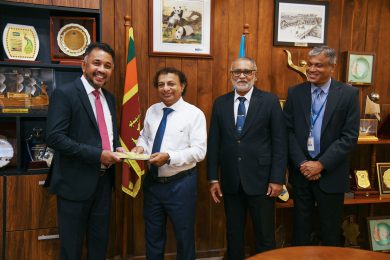The challenges faced by those providing maritime transport services are getting more complex by the day.
by Jan Hoffmann
UNCTAD’s Review of Maritime Transport 2021 (RMT) was launched on 18 November, and more than any previous issue since the inaugural report of 1968, it benefited from statistics and insights generated from Automatic Identification System (AIS) data.
Where, how many, how fast, and how big?
Building on data sets provided by MarineTraffic, the Review includes several maps and diagrams that illustrate the geography of port calls, together with the relationship between different variables about ships and their journeys.
Figure 1 shows the geographical distribution of container ship port calls and the time a ship typically spends in port. Figure 2 depicts the time in port, the number of port calls, and the maximum vessel size for each country in a plotter diagram.
Figure 1: Median time in port and number of container ship calls, 2020

Figure 2: Median time in port, number of port calls, and maximum vessel sizes, per country, container ships, 2020

Source: UNCTAD, Review of Maritime Transport 2021, http://unctad.org/RMT
In which countries do ships spend the least time in port?
There are basically two groups at both ends of the call size distribution: Countries with very few port calls are fast, because there is no waiting time, no congestion, and only few containers are loaded and unloaded per port call. Countries with lots of port calls also record fast turnaround times, as economies of scale and resources available to large economies allow for investments in port infrastructure and latest technologies.
In the middle of the distribution, there is a wide range of countries with different median times in port, which can at least partly be explained by differences in port efficiency and management.
Related read: The digital transformation of trade logistics
The breadth of AIS utilisation within RMT
Utilisation of AIS data in this year’s RMT publication is extensive with several participants in the industry contributing with additional content. For example, in Chapter 4 of the RMT, we include the following that helps with reaching actionable insights when correlated with MarineTraffic intelligence:
- Port calls and container traffic: with IHS Markit we generate performance indicators for container ports. Although larger ships spend (on average) more time in port than smaller ships, the time in port per container tends to go down with larger port calls.
- Time in port and bulk cargo traffic: with VesselsValue we provide performance indicators for dry bulk and tanker traffic. Loading tends to be faster than unloading, and the largest exporters record the best performance.
- Greenhouse-Gas emission from shipping assigned to vessel types and national fleets: with Marine Benchmark we show trends in emissions for the main vessel types and the leading flags of registration. Container ships produce more emissions per ton-mile, inter alia, because they tend to go faster than most other vessel types.
“We are always keen to contribute to RMT publications and also enjoy contributions from companies within our industry. Such efforts enable further utilisation of AIS intelligence to boost visibility for the wider ecosystem,” said Stellios Stratidakis, Head of Data at MarineTraffic. “Year on year, it is really interesting to note how insights converge and facilitate decision-making, a realistic metric of success when it comes to Maritime Analytics,” he added.
We need AIS data more than ever before
AIS data has also shown to be very useful to depict and analyse long term trends and performance, as well as a complement to trade statistics. The United Nations AIS Task Team (Task Team on AIS Data — UN-CEBD) in which MarineTraffic is also participating, is working on such issues. Along those lines, AIS data is also being used to measure container carrying capacity held up in different ports during the pandemic, to calculate voyage speeds, and to monitor congestion when ships get stuck in the Suez Canal.
As regards vessel time in port, our time-in-port data provided by MarineTraffic shows that during the first half of 2021, containerships spend on average 12 % longer in port than pre-covid in the first half of 2019. AIS data can also help identify ships that are waiting or in a holding pattern outside the port area, which are not captured by “time in port.” Covering port-to-port time, and identifying waiting areas outside the ports would help in this regard.
The biggest challenge for shipping and ports in the next decades is the decarbonisation of shipping. Here, too, AIS data can be instrumental, for example as an input for the assessment of potential impacts of measures taken at the International Maritime Organization (IMO).
At times, there may arise concerns about ensuring that commercially sensitive or personal data is well protected and respected in the maritime world. While addressing such concerns is important, we also need to ensure that the global comprehensive coverage achieved based on AIS data in recent years is maintained and enhanced. The challenges faced by those providing maritime transport services are getting more complex by the day. They include the need to reduce port congestion, responding to environmental concerns, and ensuring transparency and visibility. The stakeholders that collect, transmit and consolidate AIS data need to continuously work together to ensure that the various uses presented above can be maintained also in the future.
Jan Hoffmann, Chief of UNCTAD’s Trade Logistics Branch, Division on Technology and Logistics.























